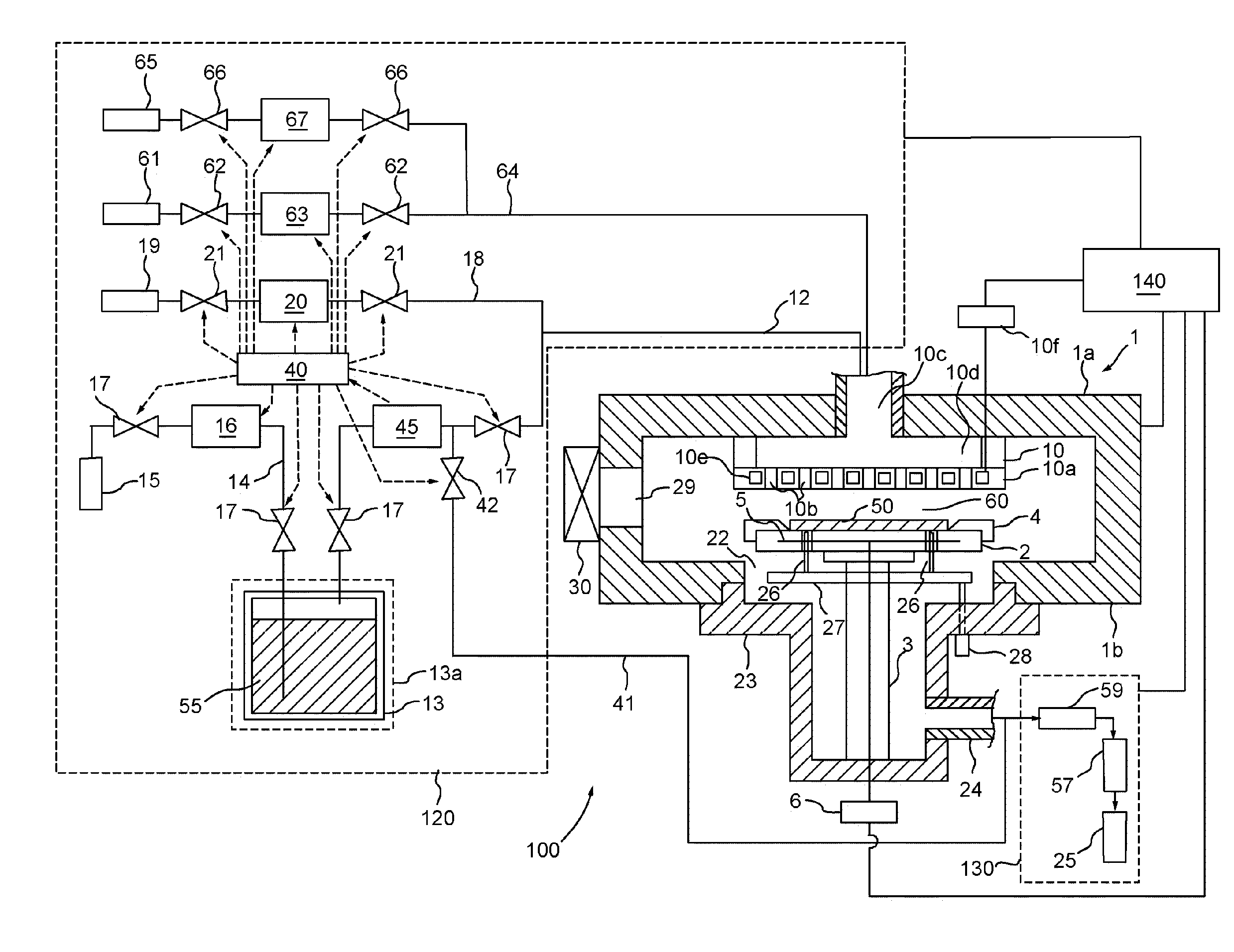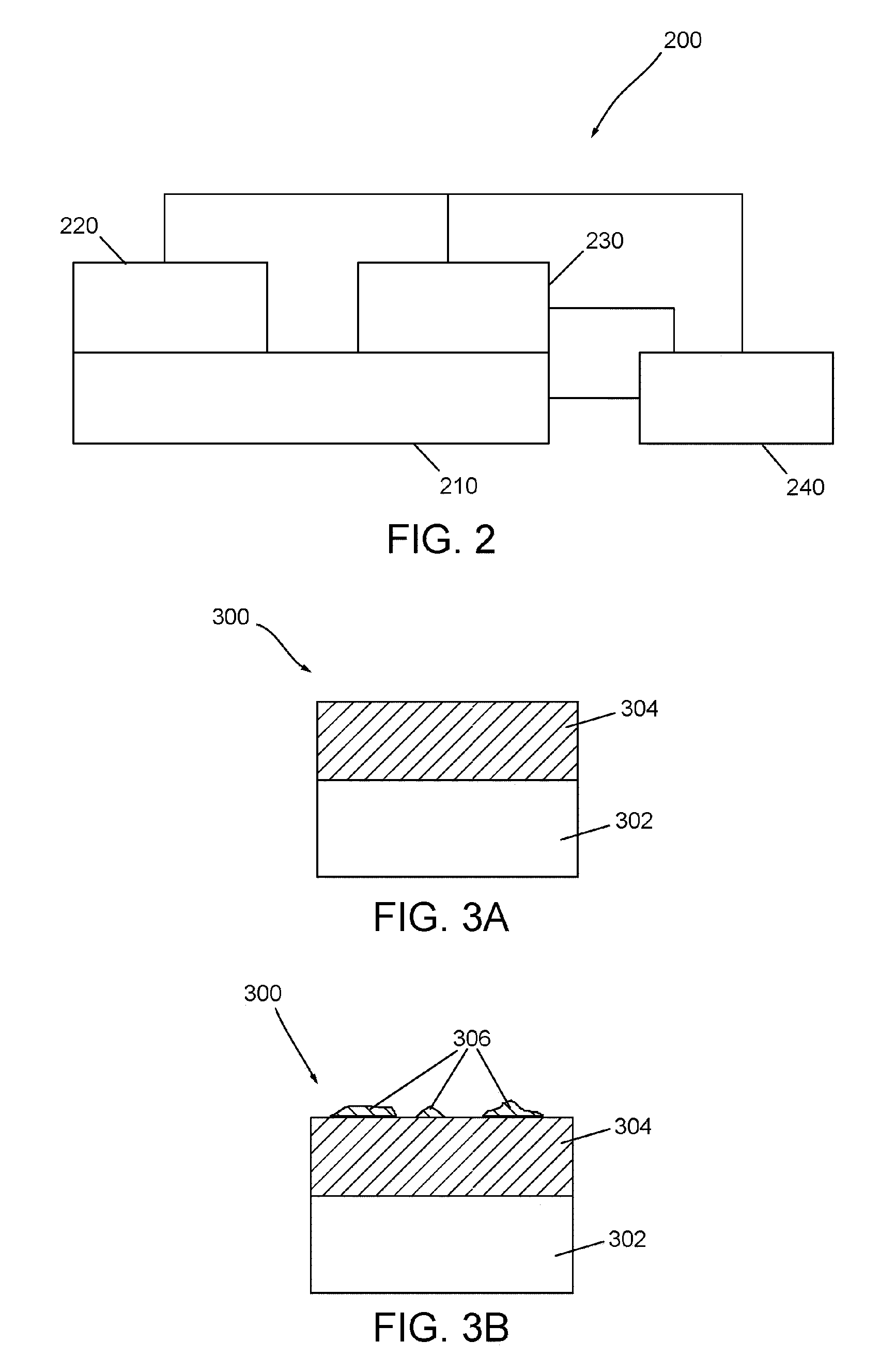Method for forming a passivated metal layer
a metal layer and passivating technology, applied in the direction of coatings, chemical vapor deposition coatings, semiconductor devices, etc., can solve the problems of incomplete decomposition of carbonyl precursors, adversely affecting the properties and morphology of re metal layers, etc., to inhibit oxygen-induced growth of re-containing nodules
- Summary
- Abstract
- Description
- Claims
- Application Information
AI Technical Summary
Benefits of technology
Problems solved by technology
Method used
Image
Examples
Embodiment Construction
[0014]FIG. 1 is a simplified block-diagram of a processing system for forming a passivated metal layer according to an embodiment of the invention. The processing system 100 comprises a process chamber 1 that contains an upper chamber section 1a, a lower chamber section 1b, and an exhaust chamber 23. A circular opening 22 is formed in the middle of lower chamber section 1b, where bottom section 1b connects to exhaust chamber 23.
[0015] Provided inside process chamber 1 is a substrate holder 2 for horizontally holding a substrate (wafer) 50 to be processed. The substrate holder 2 is supported by a cylindrical support member 3, which extends upward from the center of the lower part of exhaust chamber 23. A guide ring 4 for positioning the substrate 50 on the substrate holder 2 is provided on the edge of substrate holder 2. Furthermore, the substrate holder 2 contains a heater 5 that is controlled by power source 6, and is used for heating the substrate 50. The heater 5 can be a resist...
PUM
| Property | Measurement | Unit |
|---|---|---|
| Morphology | aaaaa | aaaaa |
Abstract
Description
Claims
Application Information
 Login to View More
Login to View More - R&D
- Intellectual Property
- Life Sciences
- Materials
- Tech Scout
- Unparalleled Data Quality
- Higher Quality Content
- 60% Fewer Hallucinations
Browse by: Latest US Patents, China's latest patents, Technical Efficacy Thesaurus, Application Domain, Technology Topic, Popular Technical Reports.
© 2025 PatSnap. All rights reserved.Legal|Privacy policy|Modern Slavery Act Transparency Statement|Sitemap|About US| Contact US: help@patsnap.com



